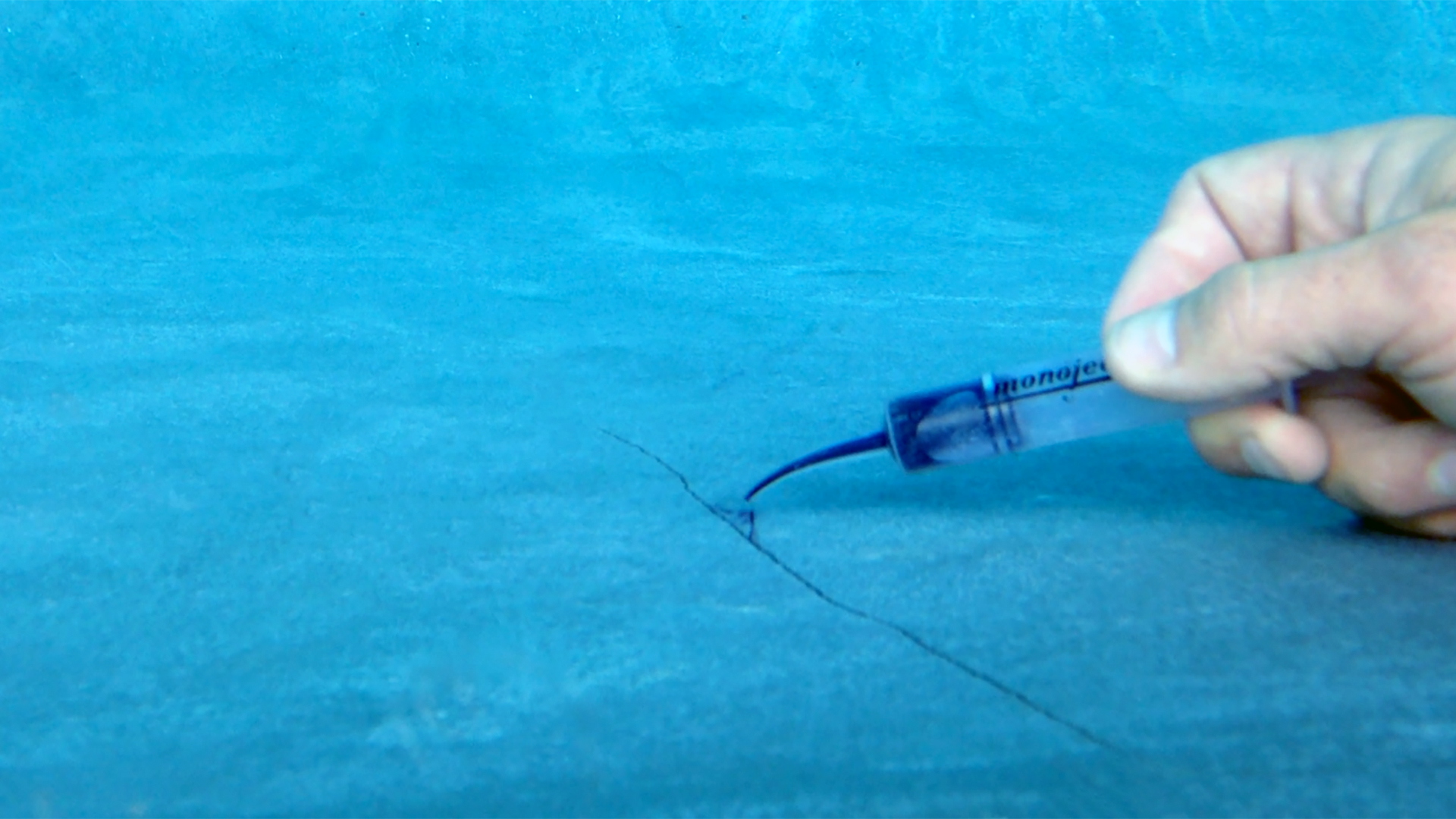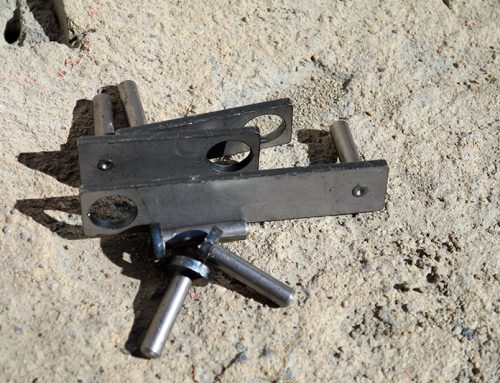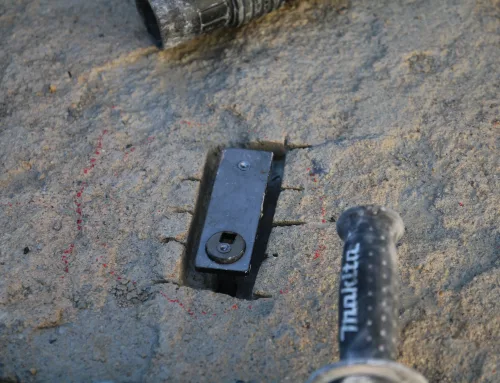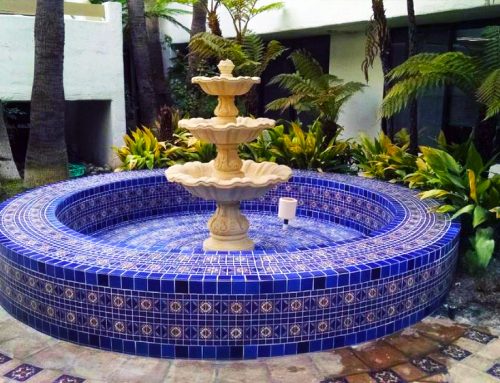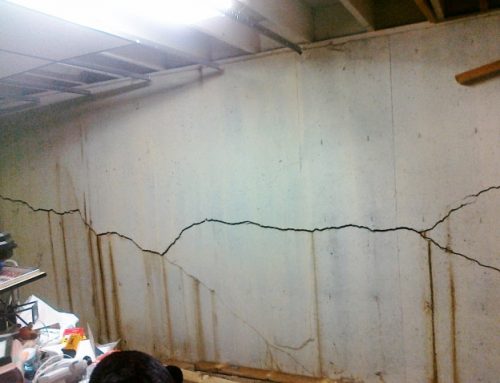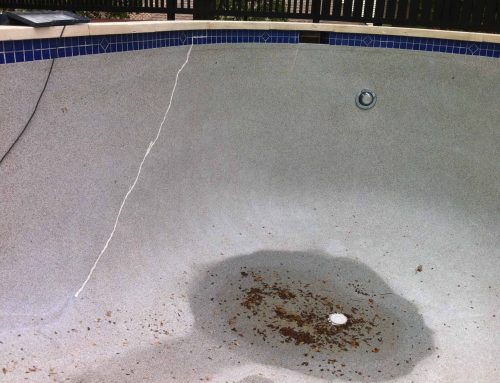Those swimming pool cracks you see in the surface of your pool are often just on the surface of the pool body, a surface crack in the plaster coat, and they might not run all the way through the pool body itself. The majority of in-ground pools are constructed of 6 to 8 inches of gunite or shotcrete, a concrete type of material that is spayed over rebar steel reinforcement. Contractors often refer to in-ground gunite and shotcrete pools as concrete pools, verses in-ground fiberglass or vinyl lined in-ground pools.
The top edge of a concrete pool body usually has an extra wide area (about 12 inches) of gunite or shotcrete that adds more strength to the top rim of the pool shell; this top area is called a bond beam. Overall, in-ground concrete pools are usually very strong and last for many years, especially with proper maintenance.
Not all pool cracks mean that the pool is leaking; for instance, shrinkage cracks are normal; they are shallow and just part of the curing process that occurs when the pool is first shot with gunite or shotcrete.
If a crack is a structural crack, it is that the pool is leaking or will be leaking in a very short amount of time. These cracks occur in the actual shell of the pool and may appear in various locations. Cracking can take place vertically or horizontally. The majority of structural cracks running through the concrete will also be mirrored through the plaster coating and even the tile area over the bond beam.
Surface cracking is basically observed in the plaster and for the most part is not a leak issue. These surface cracks are normally thought of as maintenance or repair types of issue. Don’t jump to conclusions that surface cracks are a notification of structural cracks, get a proper leak detection or pool inspection to know for sure.
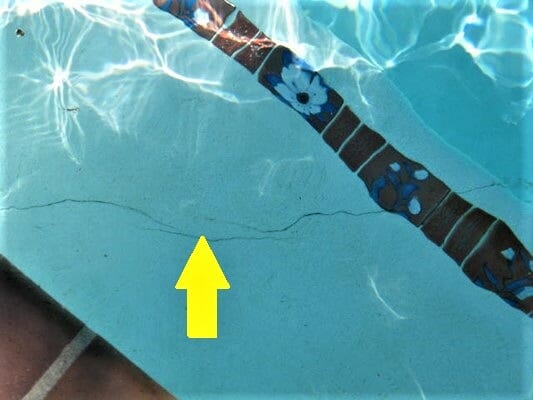
Some of the main causes of pool cracks include:
1. Improper engineering and design
If a pool is not properly designed and engineered, then the likely hood of the shell to crack increases. Often the first flaw of engineering a pool is failure to test the soils and engineer the pool based on the soil load bearing capacity and stability. Soils with a clay content, usually called expansive soils, are one of the more problematic types of soils. Additionally, poor design of the areas around the pool plays a part in the overall picture; retaining walls and the concrete deck areas around a pool are a perfect example.
2. Poor workmanship
Failure to follow the construction plans when building the pool or taking shortcuts is a large part of why a pool will crack. Simple things like adding too much water to the gunite or shotcrete when spraying it on the rebar or failure to adequately tie the rebar in place when placing the rebar, may cause cracks. Even not keeping the pool sufficiently moist after the concrete is sprayed on, especially in hot climates or hot days will cause cracking.
3. Soils issues
Soil issues are another major reason for a pool to crack. If the contractor left un-compacted soil when digging the pool hole and then built the pool on this poorly compacted soil, it may result in cracking. Soil movement, especially on hillsides, may also cause cracking; on flat lots with expansive soils or even earthquakes can cause a pool to crack.
Pool cracks are the common enemy to water loss, and when they appear, taking the quick route to put epoxy on them is likely just a temporary band-aid to repair. Cracks, regardless of epoxy use, are looking to spread wider due to the pressure that’s causing them. If the pressure continues, the crack will spread, leaking will continue and damage to the pool will increase, sometimes to the point o simply having to throw the pool away – and nobody wants that expense.
First, get a proper leak detection to see fi the crack is in fact structural and is causing the pool water to escape through the shell. This is the only way to know for certain how proper repairs need to be made. if in fact a crack is penetrating the shell of the pool, the only permanent solution is the installation of Torque Lock Structural Staples.
Torque Lock Structural Staples provide a patented method of applying a controlled compression to the side of the crack. When installed, they oppose the pressure that is trying to open the crack and concrete stays in place. When fresh cement is put into the crack, it adheres to the crack lining and makes a permanent repair. Because the crack is secured by the Torque Lock Staple, that cement is going to stay in place and water will not find it’s way out of the pool as it did before. with the installation of the staples, the crack is fixed and the pool is sound.
Visit Torque Lock today to order the staples that will fix your pool and read about the ease of installation that any contractor can do to save your pool from water loss due to structural cracking.

